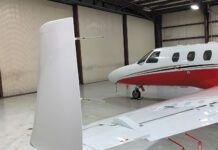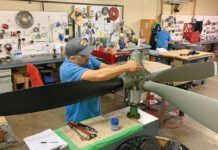Pilot Life Insurance
Regarding the life insurance for pilots article (January 2014 Aviation Consumer), I think you should know that The Pilot Insurance Center (PIC) is not all rosy. I was coming up on retirement and wanted to use life insurance as a financial tool. My bankrupt airline no longer allowed me to take a lump sum, and the annuity that I was given was taken at 100 percent, leaving my wife with nothing if I died. The insurance would fill in the gap.
PIC said the ideal weight for my height to qualify for the Preferred rate was 196 pounds. Since I was then 220, I told them I would contact them when I reached my goal (they said I would never get there). I didn’t think I was going to grow any taller, so I gave it a go.
A year later and under my doctor’s prescribed plan, I was down to 195 pounds. I called PIC, was quoted the preferred rate and a nurse was sent to the house for a physical. She took my history, checked my weight and drew blood. I waited five weeks and was told that the nurse missed something and would have to come back. She took my blood and history again. I was a pound lighter, but she didn’t take my weight.
Ultimately, I was told by PIC that since the nurse didn’t take my weight during the last visit, the company went back to my private doctor records and determined that since I hadn’t been at 196 pounds for more than a year, they denied me the preferred rates, but would be happy to insure me for a much higher premium. I found PIC to be less than upfront with information and they did not stick to their word.
Tom Woodward
Granbury, TX
PIC’s Bill Fanning responds: “After having been declined for coverage by another insurance company, Mr. Woodward applied with us and was offered a policy at Preferred Rates. He chose not to accept the coverage. Most every insurance company requires any weight loss over 25 pounds to be sustained over a 12-month period. There are many factors that are taken into consideration. In this case, there were other factors which we can not legally discuss with outside parties.”
Lake Amphibian
I just read with great enjoyment your Used Aircraft Guide on the Lake Amphibian in the January 2014 issue. On the whole, the article was informative and accurate and I particularly liked your comments about the need for Lake-specific training.
The contact info that you published about the Lake Amphibian Flyers Club is old information dating back to 2009. Since that time we have been in Wellington, Florida, and the correct phone number is 561-948-1262. The website is www.lakeflyers.com. The two engineers that created the Lake were Herb Linblad and David Thurston (not David Thrust).
The comment attributed to me about not needing ballast with four passengers is only partially correct. It is a borderline situation and depending on the actual passenger weights, aft ballast may be required. Your point was we’ll made, however, that it is not a load-and-go airplane. Front or rear ballast can be required depending on loading and careful consideration of CG loading is imperative.
Marc Rodstein
Lake Amphibian Flyers Club
Xavion beefs
I bought the Xavion app six months ago. Only after I made the non-refundable purchase did I find out that the iPad cannot be mounted at an angle to the airplane’s line of flight to use its internal GPS for AHRS (an important part of the emergency landing function of Xavion), and it will not perform its takeoff recording function unless it is running as the primary app on takeoff. My iPad is mounted to the left and slightly above the panel, facing me, which places it at an angle to the centerline of the airplane. I run ForeFlight on takeoff because of the complex airspace in Chicago. As a result, Xavion is effectively useless for me. Those limitations should have been disclosed before I spent $100 on the app. Your Xavion article (December 2013) should have noted these points.
Henry Fiorentini
Via email
Reader Fiorentini provided us with a 13-page email chain he exchanged with Xavion’s developer, Austin Meyer. In it, Meyer explained that if an iPad is mounted in a landscape orientation, an external GPS source such as the Sage-tech Clarity, is necessary for attitude information. That’s because the iPad is acting as an artificial horizon when using its internal GPS and needs to be panel-mounted the way avionics should be: pointing ahead. The takeoff recording function only works when the app is running as the primary app.
Still, we stand behind our review. Our flights were made in a complex airspace area (Denver). We had Xavion running in the foreground as its takeoff recording recording feature also gives a warning if a takeoff is attempted on a runway that is shorter than the airplane normally uses on takeoff. We are not aware of any aviation apps that provide a warning when running in the background.
We also note that some of Xavion’s features require weather information that can be obtained via an ADS-B receiver such as a Sagetech Clarity, including making full use of the runway recording and warning feature—which is disclosed by Xavion—and using such a receiver would, apparently, solve Mr. Fiorentini’s angle-mount AHRS issue.
Nevertheless, having received this information from a customer, we agree that Xavion should alert prospective purchasers that the AHRS feature will not work on an angle-mount iPad without input from an external GPS. Also, we were critical of the quality and completeness of the Xavion manual in our review. Mr. Fiorentini’s letter causes us to be of the opinion that the manual should make clear that the takeoff recording function does not work unless the app is running as the primary app. We recognize that a lot of pilots know the runways they normally use are plenty long and may chose to have Xavion running in the background on a particular takeoff and not realize they are not getting the benefit of the takeoff recording feature. —Ed.
FROM sleaze to truth
Thank you for Rick Durden’s editorial, Full Disclosure (December 2013). He made great points about product and service marketing. Me being an aircraft reseller, his comment about
the ratio of sleaze to truth one runs across when in the market for a gently used airplane caught my eye.
Selling an airplane should demand a high level of ethical behavior, regardless of who’s selling it. Unfortunately, many pertinent items are overlooked, swept under the carpet or dismissed as a matter of convenience. Occasionally, due to the complexities of any aircraft and its records, some items remain undiscovered. Buyers should be aware that when purchasing used aircraft, flaws will exist and discrepancies will surface after the sale closes.
The philosophy at my company is to disclose known issues on the first phone call with a buyer. Do we know everything about every airplane we sell? Absolutely not—perhaps the first indicator that someone is lying is when they tell you they know everything about the plane. We try to shine light on all facets of an aircraft
we represent by providing logs, background reports, dozens of close-up pictures and also video. We travel to see every airplane we represent so that the knowledge we relate about it is first-hand. And finally, we were the first to develop a 90-day or 45-hour breakdown protection policy on every 1976 and later aircraft sold (we call it the FREEdom plan).
Are we perfect? Not by a mile, but building trust with current and future clients has to begin somewhere. I appreciate your great publication.
Chris Kirk
Wild Blue Aircraft Sales
Kansas City, Missouri




